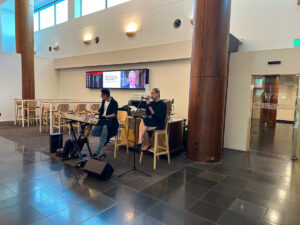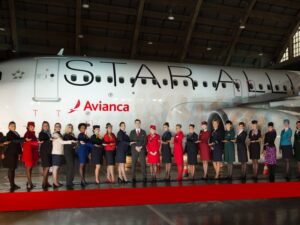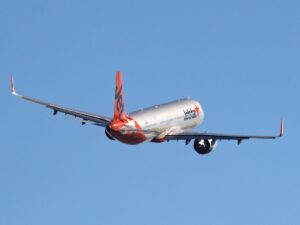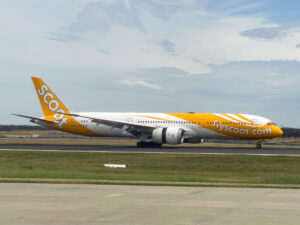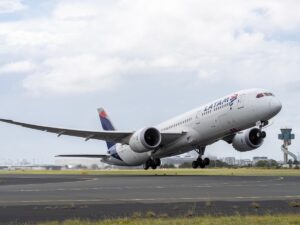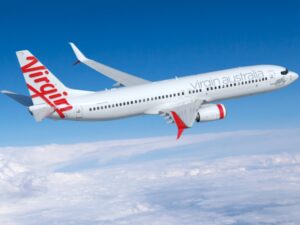
Are you a complete newbie to frequent flyer programs in Australia? This guide is for you, explaining everything you need to know to get started on your points journey!
Contents
Why collect frequent flyer points in Australia?
First of all, you may be wondering why it’s worth joining a frequent flyer program and collecting points in the first place. After all, frequent flyer programs can be a bit complicated, particularly if you want to maximise the value you get out of them. But the answer is simple.
It’s absolutely worth investing a bit of time and effort into learning how frequent flyer programs in Australia work because you can gain enormous value in return. In fact, by optimising how I earn and redeem points, I personally booked $36,000 worth of travel using my own points last year.
If you live in Australia, you’re extremely lucky to have access to so many easy ways to earn lots of valuable points – much more so than in most other countries! So, it’s no surprise that around 90% of Aussies are enrolled in at least one loyalty program.
With frequent flyer points, you can book flights to almost anywhere in the world – including in Business and First Class – while paying only the fees and taxes. You can also use points to upgrade flights, book hotels, get free products and gift cards, and lots more!

And you don’t need to be a frequent flyer to benefit. There are lots of ways to earn and redeem points without flying at all.
Some examples of flights you can book with points
When we say it’s easy to earn valuable points in Australia, we’re not joking. Let’s look at one example…
There are currently four Australian credit cards offering at least 120,000 bonus Qantas Points when you apply for the card and spend a minimum amount on it. That’s more than enough points to book a return Qantas Business Class reward ticket from Sydney or Melbourne to Indonesia. To fly Business Class from Sydney to Bali, for example, you’d just need to pay $375 in taxes & charges.

In fact, with 132,400 Qantas Points (plus taxes & charges), you could even book a round-the-world trip with up to five stopovers!
There are also currently four credit cards offering sign-up bonuses of at least 100,000 Virgin Australia Velocity Points. That’s enough for a round-trip Economy or one-way Business Class flight from Australia to India (plus taxes & charges), flying Singapore Airlines!

Even without getting a credit card, and even with a relatively small amount of points, you can still get lots of value from Australian frequent flyer programs. Domestic reward flights on Virgin Australia start from just 6,200 Velocity Points. With Qantas Frequent Flyer, Jetstar reward flights start from 6,400 points and Qantas flights from 8,000 points.

Which loyalty programs should Australians join?
The first step on your points journey is to join the most useful frequent flyer and loyalty programs for Australians.
Not sure what the best loyalty program to join in Australia is? Well, you have nothing to lose by becoming a member of all of them! 😉
If you haven’t already, we’d recommend joining the following programs:
- Qantas Frequent Flyer (click here to join)
- Velocity Frequent Flyer (click here to join)
- Everyday Rewards (click here to join)
- Flybuys (click here to join)
- BP Rewards (click here to join)
- My 7-Eleven (download the app to join)
All of these programs are free to join, except for Qantas Frequent Flyer. Qantas normally charges Australian residents a one-off $99.50 joining fee to become a member of its frequent flyer program. However, you can easily avoid paying Qantas’ joining fee by using a free-join link!
Here’s a bit more information about each of these loyalty programs…
Qantas Frequent Flyer
Qantas Frequent Flyer is the loyalty program of Qantas, the de facto national airline. It’s the most popular and prolific loyalty program in Australia, with over 15 million members.
Qantas Airways is part of the Oneworld alliance. You can redeem Qantas Frequent Flyer points to fly with Qantas, Jetstar, Emirates, Fiji Airways and over 20 other partner airlines. This includes all of the airlines that are part of the Oneworld alliance. You can also use points to upgrade on Qantas flights.
There are lots of non-flight rewards available as well, but you’ll generally get better value when redeeming your Qantas points in the air.

There are countless ways to earn Qantas points in Australia. For example, you can earn Qantas points by:
- Flying with Qantas
- Flying with Jetstar (to earn points on Jetstar, you need to purchase a Plus or Max bundle)
- Flying with any of Qantas’ other partner airlines
- Shopping via the Qantas Online Mall
- Booking hotels through Qantas Hotels
- Booking an Airbnb
- Using the Bankwest Qantas Transaction bank account
- Spending money on a Qantas Pay debit card
- Avis, Budget, Hertz and Thrifty car rentals
- Purchasing Qantas Insurance policies
- Trading shares with Superhero
- Completing surveys via Red Planet
- Completing step and sleep challenges in the free Qantas Wellbeing app
Velocity Frequent Flyer
Velocity Frequent Flyer is the loyalty program of Virgin Australia, the country’s second-biggest airline.

There are also lots of ways to earn Velocity Points in Australia. As well as flying with Virgin Australia and its partner airlines, some ways you can earn points include:
- Shopping at Myer
- Shopping with hundreds of online retailers via the Velocity eStore
- Using the rideshare platform DiDi
- Getting Medibank insurance
- Buying wine from Virgin Wines
- Completing free surveys with e-Rewards
- Booking a rental car with Europcar, Hertz, Thrifty or SIXT
- Booking a hotel Virgin Australia Hotels (powered by Hopper)
- Booking a holiday with Luxury Escapes
You can then redeem your Velocity Points to fly with Virgin Australia and nine other partner airlines, including Qatar Airways, Singapore Airlines, Etihad, United and Air Canada.

A unique benefit of Velocity is that you can pool the points and status credits earned from all the members of a single household into a single account. This is known as “family pooling”.
Everyday Rewards & Flybuys
You can earn even more Qantas and Velocity points by signing up to the Everyday Rewards and Flybuys loyalty programs!
Everyday Rewards is the loyalty program of Woolworths supermarkets. As well as at Woolies, you can earn Everyday Rewards points when shopping with retailers like Big W, BWS and Ampol. See our Everyday Rewards guide for more details.

Flybuys is the loyalty program of Coles, Australia’s other major supermarket chain. You can earn Flybuys points by shopping at Coles, K-Mart, Bunnings Warehouse, Officeworks and Liquorland, among other stores.
With both Everyday Rewards and Flybuys, you’ll earn one point per $1 spent at the supermarket. But you can earn a LOT more points by taking advantage of the many targeted bonus point offers! Our article on Flybuys points hacks explains how you can earn tens of thousands of bonus points every year.

With both Everyday Rewards and Flybuys, you can redeem 2,000 points for a $10 discount off your groceries. Alternatively, you can convert your Everyday Rewards points into Qantas points, and your Flybuys points into Velocity points!
You’ll get 500 Velocity points for every 1,000 Flybuys points that you transfer to Velocity Frequent Flyer. And if you choose to convert your Everyday Rewards points into Qantas points, you’ll get 1,000 Qantas Points for every 2,000 Everyday Rewards points.
BP Rewards & My 7-Eleven
You can earn Qantas Points when filling up at BP by joining BP Rewards and choosing to earn Qantas Points.

You can also earn Velocity Points at 7-Eleven by downloading the My 7-Eleven app, creating a My 7-Eleven account and linking your Velocity membership.
Other loyalty programs Australians may consider joining
It seems that almost every other company in Australia has its own loyalty program as well! Most are free to join, and it’s usually worth doing so if you’ll be a regular customer.
If you end up with lots of different loyalty cards, consider storing them digitally in the Stocard app.
As a starting point, here are a few more rewards programs in Australia you might consider joining:
- Rex Flyer, the loyalty program of Rex (Regional Express) Airlines
- KrisFlyer, the loyalty program of Singapore Airlines
- Priceline Sister Club, which has nothing to do with flying but is one of Australia’s other most popular loyalty programs
- Myer One, the popular loyalty program of Myer department stores

Tricks to earn lots of frequent flyer points in Australia
There are lots of ways to earn frequent flyer points in Australia from your everyday activities and purchases – without even setting foot on a plane. But you can really supercharge your points balances with these tricks…
Qantas Wine
Qantas operates its own online wine retailer, and it regularly offers large amounts of bonus points when you buy a case of wine! In fact, if you need an extra 10,000 to 30,000 Qantas points, it’s often cheaper just to buy a box of wine than it is to buy top-up points… and you’ll get to enjoy some quality wine as well.

See our guide to Qantas Wine bonus point offers for details.
Credit cards
You can earn points on just about everything you buy using a points-earning credit card. But, as mentioned at the start of this article, one of the best tricks to earn lots of points for minimal outlay is with credit card sign-up bonus offers.
Australia has an extremely competitive credit card market. So, the banks compete with each other for new customers by offering huge amounts of bonus points when you sign up for a new card.
In fact, you could earn over 100,000 points just by applying for a new credit card, paying the annual fee and spending a minimum amount within the first few months. With some card offers, the annual fee is sometimes even waived or reduced in the first year.

Note that these offers are usually only available to customers who haven’t held a card with that bank in the past 12-18 months.
Also, beware that if you apply for too many cards within a short time or don’t pay off your card’s balance in full each month, this can affect your ability to access credit in the future. Free services like GetCreditScore can help you to keep track of your credit rating.
You can see the best current offers for Qantas and Velocity credit cards in our dedicated guides, which we update monthly:
See a real-life case study
For more ideas, this article explains how I personally earn my frequent flyer points!
Don’t let your points expire
As long as you’re earning or redeeming points regularly, your points won’t expire. But you should be aware of the expiration policies of the loyalty programs you use.
Virgin Australia Velocity points expire if you don’t earn or use any points for two years. Qantas and Everyday Rewards points expire if your account is inactive for 18 months. And Flybuys will close your account if you don’t use it at all for a year.
Even if you don’t fly often, it’s easy to maintain activity in your frequent flyer accounts and stop your points expiring. For example, you can earn free points every week by completing challenges in the Qantas Wellbeing app. You can also scan your Velocity card occasionally at 7-Eleven to earn Velocity points – even if you’re just buying a coffee. (Drinking the coffee from 7-Eleven is optional. 😉 )

Airline status tiers
As you fly with Qantas or Virgin Australia, you can earn points and also status credits in the respective airlines’ programs.
Status credits count towards your membership tier. The more status credits you earn within a year, the higher your membership level – and the more perks you can enjoy when you fly! For example, Gold status with Qantas or Virgin will get you access into their airport lounges.

See our guide to earning Qantas status and guide to earning Virgin Australia status for more details.
Get cheaper flights
When you book plane tickets with Virgin Australia or Jetstar, there are a few more tricks you can use to save money!
Both airlines have weekly sales at specific times, so keep an eye out for those. Virgin Australia’s Happy Hour is from 4-11pm on Thursdays. Jetstar’s weekly Fare Frenzy runs from 4-8pm on Fridays.
You can also save on Virgin Australia flights by using promo codes, and Jetstar offers a Price Beat Guarantee that gets you 10% off a competing airline’s price.

Where to learn more about Australian frequent flyer programs
So far, we’ve just scratched the surface when it comes to the best frequent flyer programs in Australia!
You can gain a lot by taking the time to understand how they work, and maximising your points-earning strategy. And Australian Frequent Flyer (AFF) can help you with that!
In addition to all the basics, our Frequent Flyer Training teaches lots of tricks and strategies to help you travel much better, while also saving money. The courses are easy to follow and understand.

If you’re starting out on your frequent flyer points journey – or want to up your game – our training courses are essential reading.
The first two courses of our Frequent Flyer Training are beginner courses and are absolutely free for all AFF members. Our expert courses are available to AFF Platinum members.
That’s not all! You can find lots more tips, ask questions and interact with other AFF members on our vibrant community forum. If you’re new to the AFF forum, check out our selection of AFF threads for new members. Our Qantas Newbie Questions Thread and Virgin Australia Newbie Questions Thread are also great places to ask questions.
In addition, we host regular online webinars where our experts share the latest tips and tricks for frequent flyers. Webinar access is available with a premium AFF membership.
You can also subscribe to our free twice-weekly Frequent Flyer Gazette newsletter to stay up to date with the latest news, issues and deals for Australian frequent flyers.
These are just some of the benefits available to AFF members. If you haven’t already, join AFF today and upgrade your travel game!
Frequently asked questions (FAQs)
You can join Qantas Frequent Flyer on the Qantas website, however there’s a $99.50 joining fee for Australian residents. You can avoid paying this fee by using a free join link such as https://www.qantas.com/au/en/frequent-flyer/discover-and-join/join-now.html/code/FAMILYFREE
Qantas Frequent Flyer points expire if you do not earn or redeem any points for 18 months. You can prevent your Qantas Points from expiring by simply maintaining activity in your account at least once every 18 months. The easiest way is to earn points for free with the Qantas Wellbeing App.
Virgin Australia Velocity Frequent Flyer points expire if your account is inactive for two years. Simply earn or redeem at least one Velocity Points at least every 24 months to stop your points expiring.
If you live in Australia, we recommend joining both the Qantas and Virgin Australia Velocity loyalty programs. It’s easy to earn points with both programs in Australia, and you can use them for valuable rewards.
Keep an eye out for airline sales, particularly the Jetstar Fare Frenzy every Friday between 4-8pm and Virgin Australia’s Happy Hour on Thursdays from 4-11pm. You can also save money on Virgin Australia flights by using a promo code.

